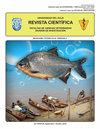The effect of myo–inositol supplementation on feed physicochemical structure and viral load of dry cat food contaminated with SARS–CoV–2 by simulating sneezing
IF 0.3
4区 农林科学
Q4 VETERINARY SCIENCES
Revista Cientifica-Facultad De Ciencias Veterinarias
Pub Date : 2023-10-13
DOI:10.52973/rcfcv-e33282
引用次数: 0
Abstract
The study was carried to investigate the effect of myo–inositol supplementation on feed physicochemical structure and viral load of dry cat food contaminated with inactive SARS–CoV–2 by simulating sneezing. The most natural infection of severe acute respiratory syndrome coronavirus 2 (SARS–CoV–2) in animals is related to close contact with their owners with COVID–19 which is handling, taking care and feeding them. SARS–CoV–2 can survive on food, fomites and surfaces for extended periods related to environmental conditions. Many natural feed additives and supplements have been a candidate in recent antiviral treatment strategies against COVID–19. In this study, myo–inositol which is permitted in animal nutrition was used at different concentrations (0, 12.5, 25 and 50 mg·100 g-1 cat food) and conditions (22°C at room temperature and 4°C in the refrigerator) to investigate its effects on feed physicochemical structure and viral load of dry cat food contaminated with inactive SARS–CoV–2 by simulating sneezing. For the interactions between myo–inositol, feed structure and viral load, dry matter, moisture, water absorption index (WAI), water solubility index (WSI), pH and virus gene copy (GC) by RT–qPCR were measured. As only storage temperature affected both WAI and WSI as expected, myo–inostol supplementation dose–dependently decreased gene copy in dry cat food (IC50:366.4–581.5 mg·100 g-1 cat food) at 22°C storage temperature. Virus GC did not correlate with the dry matter, moisture content, pH and WAI after the 30 min contact time (except WSI). In conclusion, myo–inositol as a feed additive might have the potential to control serious viral infections such as COVID–19 for human–animal interactions in a One–Health context.模拟打喷嚏法研究添加肌醇对SARS-CoV-2污染干猫粮饲料理化结构和病毒载量的影响
通过模拟打喷嚏的方法,研究添加肌醇对非活性SARS-CoV-2污染干猫粮饲料理化结构和病毒载量的影响。动物中最自然的严重急性呼吸综合征冠状病毒2 (SARS-CoV-2)感染与与感染COVID-19的主人密切接触有关,这些主人正在处理、照顾和喂养它们。SARS-CoV-2可以在与环境条件相关的食物、污染物和表面上存活较长时间。在最近针对COVID-19的抗病毒治疗策略中,许多天然饲料添加剂和补充剂已成为候选方案。本研究以动物营养中允许使用的肌醇为研究对象,在不同浓度(0、12.5、25和50 mg·100 g-1猫粮)和条件(室温22°C和冰箱4°C)下,通过模拟打喷嚏的方式,研究其对被非活性SARS-CoV-2污染的干猫粮饲料理化结构和病毒载量的影响。采用RT-qPCR法测定干物质、水分、吸水指数(WAI)、水溶性指数(WSI)、pH和病毒基因拷贝数(GC),研究肌醇、饲料结构与病毒载量的相互作用。正如预期的那样,只有储存温度会影响WAI和WSI,在22°C的储存温度下,肌醇补充剂量依赖性地减少了干猫粮(IC50:366.4-581.5 mg·100 g-1猫粮)的基因拷贝。接触30 min后,病毒GC与干物质、含水量、pH和WAI (WSI除外)均无相关性。总之,肌醇作为饲料添加剂可能有潜力控制严重的病毒感染,如COVID-19在单一健康环境下的人与动物相互作用。
本文章由计算机程序翻译,如有差异,请以英文原文为准。
求助全文
约1分钟内获得全文
求助全文
来源期刊
CiteScore
0.20
自引率
0.00%
发文量
66
审稿时长
18-36 weeks
期刊介绍:
Information not localized

 求助内容:
求助内容: 应助结果提醒方式:
应助结果提醒方式:


